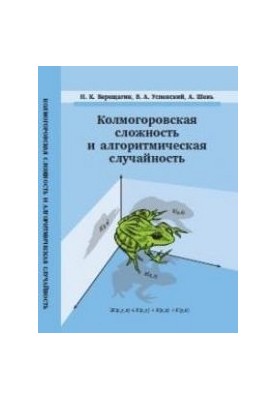Kolmogorov complexity and algorithmic randomness
 Instant download
Instant download
after payment (24/7)
 Wide range of formats
Wide range of formats
(for all gadgets)
 Full book
Full book
(including for Apple and Android)
Classical (Shennonian) information theory measures the amount of information contained in random variables. In the mid-1960s, A. H. Kolmogorov (and other authors) proposed to measure the amount of information in finite objects using algorithm theory, defining the complexity of an object as the minimum length of the program that generates this object. This definition served as the basis for algorithmic information theory, as well as for algorithmic probability theory: an object is considered random if its complexity is close to the maximum. The proposed book contains a detailed description of the basic concepts of algorithmic information theory and probability theory, as well as the most important works performed within the framework of the Kolmogorov seminar on the complexity of definitions and the complexity of calculations, founded by A. H. Kolmogorov in the early 1980s . The book is designed for students and postgraduates of mathematical faculties and faculties of theoretical computer science .
LF/794288643/R
Data sheet
- Name of the Author
- Верещагин Н.К.
Успенский В.А.
Шень А. - Language
- Russian
- ISBN
- 9785443902128
- Release date
- 2013




















